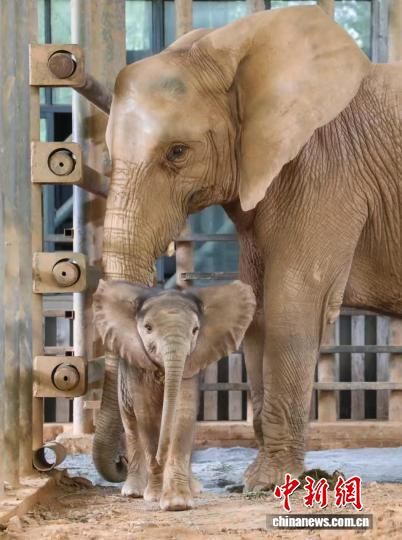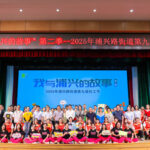August 12 is World Elephant Day. One of the biggest challenges in the conservation of African elephants through relocation is breeding. Since introducing 12 African elephants in 2016, after nearly a decade of relentless effort, the issue has been successfully addressed.
Since the first African elephant calf was born last November, three more calves have been welcomed over the past six months. On November 27, 2024, a young African elephant named “Xiao Bai” gave birth to a healthy male calf, “Xiao Xiao Bai,” weighing over 100 kilograms. On February 13, 2025, after a 22-month gestation, African elephant “Lu Lu” delivered a male calf, “Xiao Xiao Lu,” who weighed 135 kilograms at two weeks old. On May 22 of this year, African elephant “Lu Si” gave birth to a female calf weighing approximately 90 kilograms.
African elephant “Lu Si” and her calf in a specially designed nursery area.
African elephants are highly sensitive to climate, food, and social environments; even minor discomfort can affect their survival and reproduction. To meet this challenge, innovative approaches were adopted, including a large-group management model and the creation of a small ecological environment closely resembling their natural habitat.
From diverse food supplies and personalized nutrition plans to regular weight and height measurements, waste weighing, medical exams, and deworming, every measure reflects meticulous care and ongoing exploration in elephant rearing.
Currently, “Lu Si” and her calf live in a nursery area also occupied by “Xiao Bai” and her calf, as well as “Lu Lu” and her calf. The mothers are grouped together to allow them to share parenting experiences and nurture their young more naturally.
As a first-time mother, the large “Lu Si” was initially unsure how to handle her delicate newborn. When the calf struggled to stand and reach her mammary glands, caretakers discreetly raised the ground on one side with straw. Eventually, the calf successfully nursed. The little elephant’s head swayed gently as it swallowed, a charming sight. Now, “Lu Si’s” calf is thriving, lively and active, often interacting with its two older brothers through trunk touches.
The successive births of African elephant calves not only demonstrate expertise in breeding but also offer new insights and directions for global African elephant conservation. The growth of these calves will provide valuable data for research on protection, reproduction, and development. In the future, they may play a key role in genetic exchange, helping enhance the genetic diversity of captive African elephants.





